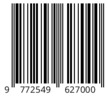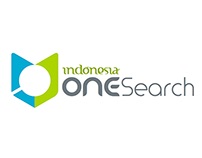Tinjauan Kedwibahasaan Buku Cerita Anak ‘The Foos’ dari Pandangan Metode Penerjemahan
Abstract
Bilingual children's story books in Indonesian and English are now being published in Indonesia, providing them as reading options for mothers, caregivers, storytellers, and the children themselves. This study aims to analyze, identify, describe, and classify the forms of translation methods found in a bilingual children's storybook entitled 'The Foos' by Arleen Amidjaja, as well as to analyze the translation methods applied to determine the success in achieving equivalence of meaning in the target language (TL). This study uses a qualitative descriptive method and a documentation method. Employing text analysis, careful reading, and note taking techniques for research constitutes the stages of data collection. Text analysis uses Newmark's translation method theory with data sources from English texts as the source language text (SL) and Indonesian as the TL from the storybook 'The Foos.' The results of the analysis are presented in the form of a comparison of the two languages , along with the results of identifying SL and TL text translation techniques. The interpretation of the identification results is then presented in the form of a descriptive presentation by considering the translation techniques of the identification results. The results of this study indicate that 12 translation method data are oriented to the SL, and eight are oriented to the TL. The translation techniques that are often used are semantic and communicative translation techniques. There are no faithful, adaptation, or idiomatic translation techniques because the children's storybook 'The Foos' does not have proverbial sentences or other foreign language terms. The SL uses simple sentence structures and vocabulary. The translation method that is oriented to the SL with semantic and communicative translation techniques is effective for translating children's storybooks, ensuring that readers understand the content of the stories.
Keywords
Full Text:
PDFReferences
Amidjaja, A. (2016). The foos. In Grandma, Grandpa and Me Nenek,Kakek, dan Aku.
Batu, M. (2022). Hutan Kemenyan: Frankincense Forest. In E. L. M. Nababan (Ed.), & M. Nababan (Penerj.), Antologi Cerita Anak Indonesia (hal. 5–35). The Agency for Language Development and Cultivation The Ministry of Education, Culture, Research and Technology. https://badanbahasa.kemdikbud.go.id/resource/doc/files/INGGRIS.pdf
Chow, Y. F., Omar, H. C., & Rahman, W. R. E. A. (2021). Manga Translation and Censorship Issues in Malaysia. KEMANUSIAAN The Asian Journal of Humanities, 28(1), 1–21. https://doi.org/10.21315/kajh2021.28.1.1
Dagilien?, I. (2012). Translation as a Learning Method in English Language Teaching. Studies About Languages. https://doi.org/10.5755/j01.sal.0.21.1469
Denny, T. (2015). Storytelling and educational understanding. In Advances in Program Evaluation (hal. 41–61). https://doi.org/10.1108/S1474-786320140000015002
Devi, P. C. A., Sudipa, I. N., & Puspani, I. A. M. (2021). Foreignization and Domestication Ideology of Indonesian Cultural Terms in Janda Dari Jirah Translated into English. Linguistika: Buletin Ilmiah Program Magister Linguistik Universitas Udayana, 28(1), 97. https://doi.org/10.24843/ling.2021.v28.i01.p09
Engliana, E., Indrapratiwi, A., & Ransang, R. M. (2020). Readers’ Responses to The Reading of Translations of Children’s Story. DEIKSIS, 12(02), 140. https://doi.org/10.30998/deiksis.v12i02.5925
Engliana, E., Prasetyo, A., & Nisa, A. (2021). Empowering young children with folktales and storytelling : A report from a rural West Java village. Asia-Pacific Journal of Research in Early Childhood Education, 15(1), 157–180. https://doi.org/http://dx.doi.org/10.17206/apjrece.2021.15.1.157
Engliana, & Miranti, I. (2020). Penerjemahan frasa verbal dari Bahasa Inggris ke Bahasa Indonesia. Ranah: Jurnal Kajian Bahasa, 9(1), 56–71. https://doi.org/https://doi.org/10.26499/rnh/v9i1.862
Fitriani, E., & Ifianti, T. (2021). Onomatope dalam buku cerita anak dwibahasa Little Abid Seri pengetahuan dasar (Analisis metode dan prosedur penerjemahan). Briliant: Jurnal Riset dan Konseptual, 6(1), 66. https://doi.org/10.28926/briliant.v6i1.584
House, J. (2016). Translation as communication across languages and cultures. Translation as Communication Across Languages and Cultures. https://doi.org/10.4324/9781315668956
Klos, S. (2021). Cognitive development and humor processing in children. Studia Translatorica, 12, 93–107. https://doi.org/10.23817/strans.12-7
Lee, T. K. (2015). China as dystopia: Cultural imaginings through translation. Translation Studies, 8(3), 251–268. https://doi.org/10.1080/14781700.2015.1009937
Malkiel, B. (2009). Translation as a decision process: Evidence from cognates. Babel. Revue internationale de la traduction / International Journal of Translation, 55(3), 228–243. https://doi.org/10.1075/babel.55.3.02mal
Miranti, I., Engliana, & Hapsari, F. S. (2015). Penggunaan media lagu Anak-Anak Dalam Mengembangkan Kemampuan Kosakata Bahasa Inggris Siswa Di PAUD. Faktor: Jurnal Ilmiah Kependidikan, 2(2).
Molina, L., & Albir, A. H. (2002). Translation techniques revisited: A dynamic and functionalist approach. Meta, 47(4), 498–512. https://doi.org/10.7202/008033ar
Munday, J. (2016). Introducing Translation Studies. In Introducing Translation Studies. Routledge. https://doi.org/10.4324/9781315691862
Newmark, P. (1988). A textbook of translation (12 ed.). Prentice-Hall International. https://doi.org/10.1017/CBO9781107415324.004
Nurhidayah, V. A. (2018). Penerjemahan Puisi. Diglossia: Jurnal Kajian Ilmiah Kebahasaan dan Kesusastraan, 9(2), 123. https://doi.org/10.26594/diglossia.v9i2.1142
Nurjanah, N., Dwiastuty, N., & Susilawati, S. (2015). Mengenalkan model pengajaran edutainment: Mengajarkan Bahasa Inggris pada anak–anak usia dini. Faktor Jurnal Ilmiah Kependidikan, 2(3), 251–255. https://journal.lppmunindra.ac.id/index.php/Faktor/article/view/480
Pelawi, B. Y. (2009). Aspek Semantik dan Pragmatik dalam Penerjemahan. Lingua Cultura, 3(2), 146. https://doi.org/10.21512/lc.v3i2.34
Rahman, M., & Izzah, L. (2015). The Power of Storytelling in Teaching English to Young Learners. 1st International Seminar Childhood Care and Education: Aisiyah’s Awareness on Early Childhood and Education. https://doi.org/10.5281/zenodo.1214962
Rietveld, L. (2019). Use of vocabulary translation strategies: A semantic translation analysis. Applied Translation, 13(2), 1–7. https://doi.org/10.51708/apptrans.v13n2.419
Rifanto, D. (2022). Sasi Laut: Kampung Sintike. In E. L. M. Nababan (Ed.), & P. M. Maryen (Penerj.), Antologi Cerita Anak Indonesia (hal. 319–349). The Agency for Language Development and Cultivation The Ministry of Education, Culture, Research and Technology. https://badanbahasa.kemdikbud.go.id/resource/doc/files/INGGRIS.pdf
Rukiyah, R. (2018). Dongeng, mendongeng, dan manfaatnya. Anuva: Jurnal Kajian Budaya, Perpustakaan, dan Informasi, 2(1), 99. https://doi.org/10.14710/anuva.2.1.99-106
Rukmana, G. W., Putrayasa, I. B., & Sanjaya, D. B. (2023). Buku cerita anak dwibahasa bermuatan Tri Hita Karana untuk meningkatkan motivasi belajar Bahasa Inggris pada siswa kelas III Sekolah Dasar. Jurnal Imiah Pendidikan dan Pembelajaran, 7(2), 316–325. https://doi.org/10.23887/jipp.v7i2.61595
Saragih, F. A. (2017). Penggunaan strategi struktural dan semantik dalam terjemahan cerita rakyat Jepang “Donguri dan kucing hutan” karya Antonius Pudjo. Diglossia: Jurnal Kajian Ilmiah Kebahasaan dan Kesusastraan, 9(1), 11. https://doi.org/10.26594/diglossia.v9i1.966
Saraswati, R., & Engliana, E. (2022). Methods and techniques in the English translation of Balinese culture in the novel “Sukreni Gadis Bali.” Prosiding Konferensi Linguistik Tahunan Atma Jaya (KOLITA), 20(20), 306–314. https://doi.org/10.25170/kolita.20.3809
Sari, W. R. F., & Gusthini, M. (2023). Analisis strategi penerjemahan istilah budaya pada buku cerita anak dari platform Let’s Read Asia. Jurnal Humaya: Jurnal Hukum, Humaniora, Masyarakat, dan Budaya, 3(1), 49–60. https://doi.org/10.33830/humaya.v3i1.4128
Sarumpaet, R. K. T. (2003). Struktur bacaan anak. In Teknik Menulis Cerita Anak. Pink Books. https://perpustakaanbalaibahasadiy.kemdikbud.go.id/index.php?p=show_detail&id=247&keywords=
Sininta, A. G., & Santiar, L. (2020). Strategi penerjemahan humor pada novel “Harry Potter and the Philosopher’s Stone” terjemahan bahasa Jepang. Jurnal Kajian Jepang, 4(1), 1–29.
Sintia, I., Pasarella, M. D., & Pasarella, M. D. (2022). Perbandingan Tingkat Konsistensi Uji Distribusi Normalitas pada Kasus Tingkat Penggangguran di Jawa. PROSIDING SEMINAR NASIONAL MATEMATIKA DAN STATISTIKA, 2.
Thambu, N. (2017). Storytelling and story reading: A catalyst for inculcate moral values and ethics among preschoolers. International Journal of Academic Research in Business and Social Sciences, 7(6), 1116–1130. https://doi.org/10.6007/IJARBSS/v7-i6/3143
Thawabteh, M. A. (2010). The translatability of interjections: A case study of Arabic-English subtitling. Meta, 55(3), 499–515. https://doi.org/10.7202/045067ar
Yansyah, Y., Hamidah, J., & Ariani, L. (2021). Pengembangan Big Book Storytelling Dwibahasa untuk Meningkatkan Literasi Anak Usia Dini. Jurnal Obsesi : Jurnal Pendidikan Anak Usia Dini, 6(3), 1449–1460. https://doi.org/10.31004/obsesi.v6i3.1779
Ying, C. P., & Seong, G. S. (2021). Prosedur Terjemahan Kata Nama Khas Taoisme dalam Hikayat Jelajah ke Barat. KEMANUSIAAN The Asian Journal of Humanities, 28(1), 47–72. https://doi.org/10.21315/kajh2021.28.1.3
Zhou, N., & Yadav, A. (2017). Effects of multimedia story reading and questioning on preschoolers’ vocabulary learning, story comprehension, and reading engagement. Educational Technology Research and Development, 65(6), 1523–1545. https://doi.org/10.1007/s11423-017-9533-2
DOI: https://doi.org/10.31002/transformatika.v8i2.4382
DOI (PDF): https://doi.org/10.31002/transformatika.v8i2.4382.g3470
Refbacks
- There are currently no refbacks.
Copyright (c) 2025 Aisyah Mardliyah

This work is licensed under a Creative Commons Attribution-ShareAlike 4.0 International License.


_(2)_.png)
.png)
_.png)
.png)
.png)















